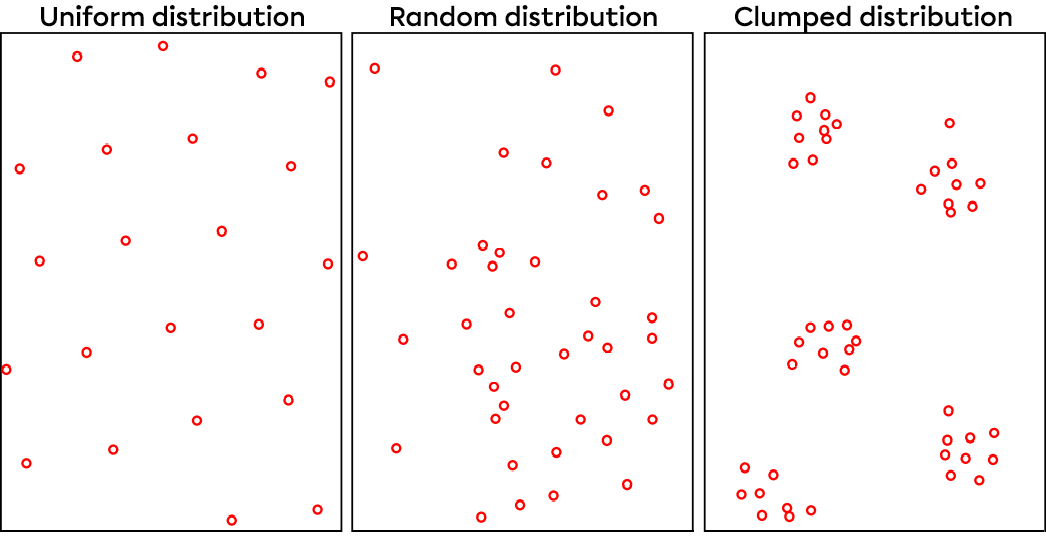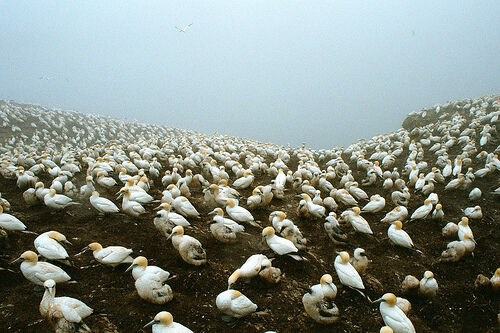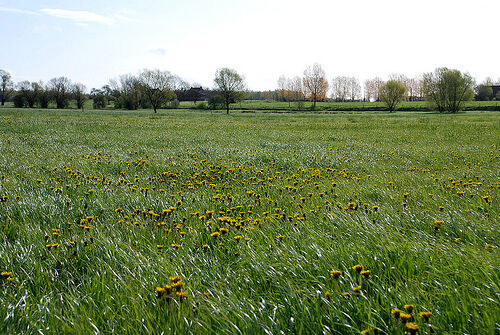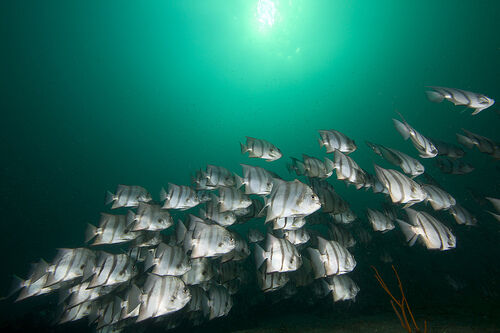The study of populations is the study of the size, density and distribution of populations in a given area, as well as their evolution over time (for example, their growth or decline).
There are several ways to determine the size of a population.
-
Direct counting: This simply means directly counting individuals in the population over the entire territory.
-
Indirect sampling: This consists of counting how many nests/burrows, tracks or excrement samples are on the territory.
-
Counting by sample area: The territory is divided into small sections to determine the average population density per sample area. Then, the total population size is calculated (see concept sheet on Population Density for an example).
-
Mark-recapture sampling: This method consists of capturing individuals in traps, marking them with rings or collars and releasing them on their territory. Later, individuals are captured a second time, and the number of recaptured (marked) individuals provides an estimate of the population size. Here is an example of this type of sampling.
A team of wildlife technicians captures and marks 100 red foxes. During a recapture operation, 135 individuals are captured and 90 of them are already marked. What is the size of the red fox population?
Given values:
Number of marked individuals = |100|
Total number of individuals captured (2nd capture) = |135|
Number of marked recaptured individuals = |90|
Population Size = ?
Calculation:
|\text{Population size}=\dfrac{\text{Marked individuals} \times \text{Individuals captured during } 2^{\text{nd}}\text { capture}}{\text{Marked recaptured individuals} }|
|\begin{align}\text{Population size}&=\dfrac{100\ \times \ 135}{90}\\ &=150\ \text{individuals}\end{align}|
Answer: There are 150 red foxes on this territory.
The distribution of a population refers to how the individuals in a given population are spread over their territory. This concept is also called dispersion.
There are three types of distribution: uniform, random and clumped.

Uniform distribution is the rarest type of distribution. In this situation, individuals are evenly spaced over the territory, often due to a high level of competition for resources or space.
Northern gannets prefer uniform distribution for nesting. This method respects the minimum acceptable territory of each individual in the colony.

Random distribution occurs when individuals do not have to compete; the conditions of the resources are the same everywhere in the territory. As a result, individuals are distributed randomly and unpredictably over the territory.
Plants or trees whose seeds are dispersed by the wind are an example of random distribution.

The last and most common type of distribution is clumped distribution. This type of dispersion happens when individuals form groups in places where the chances of survival are the best, so areas with the best living conditions.
Often, fish will form groups called schools. In these groups, they expend less energy by reducing the risk of predation and increasing efficiency as they search for food.
